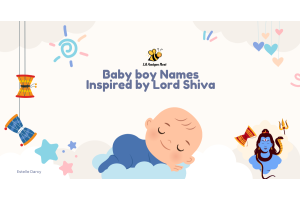Why Do We Celebrate Navratri?

Navratri is one of the most celebrated Hindu festivals in India and across the world. It is a festival that honors Goddess Durga and her nine divine forms. Every year, millions of devotees gather for prayers, fasting, music, and dance during this nine-day-long festival. When people think of Navratri 2025, they also connect it with Durga Puja 2025, which falls around the same time in many parts of India. But the real question many people ask is, why do we celebrate Navratri? The answer lies in its deep cultural roots, spiritual meaning, and centuries-old Navratri history.
Durga Puja and Navratri are more than just rituals; they are about celebrating the victory of good over evil, devotion over arrogance, and light over darkness. This Hindu festival carries the essence of unity, cultural richness, and spiritual awakening. By exploring Navratri history, traditions, and the stories behind it, we can understand why it holds such importance in every Indian household.
The History of Navratri
Navratri's history dates back thousands of years. According to Hindu mythology, Navratri is linked to the story of Goddess Durga’s fierce battle against the demon Mahishasura. Mahishasura had received a boon that no man or god could defeat him. With his powers, he spread terror across the heavens and earth. To restore balance, the gods combined their divine energies to create Goddess Durga, a powerful warrior with ten arms.
The battle between Durga and Mahishasura lasted for nine days and nights. On the tenth day, she defeated him, marking the triumph of good over evil. This day is celebrated as Vijayadashami or Dussehra. Thus, Navratri is celebrated as a remembrance of this victory and as a symbol of faith that evil never lasts long.
This powerful legend is the backbone of Durga Puja and Navratri celebrations. It is why Navratri is not just a ritual but a reminder of strength, courage, and the divine energy that protects the universe.
Significance of Navratri in Hindu Culture
Navratri is not just about worship; it is a time of self-purification, devotion, and celebration. It teaches important life values:
- Victory of Good over Evil – Just like Durga destroyed Mahishasura, it symbolizes that truth always wins.
- Balance of Life – Worshiping the nine forms of Durga represents balance in strength, wisdom, kindness, and courage.
- Spiritual Awakening – Fasting and prayers during Navratri help people cleanse their mind and body.
- Cultural Unity – From Gujarat’s Garba dance to West Bengal’s Durga Puja, every region celebrates it in unique ways, making it a pan-Indian festival.
For many, Navratri 2025 will be a chance to reconnect with traditions while adapting them to modern lifestyles.
The Nine Days of Navratri and Their Meaning
Navratri is spread across nine nights, each day dedicated to one form of Goddess Durga:
- Day 1 – Shailputri: Symbol of strength and purity.
- Day 2 – Brahmacharini: Represents devotion and meditation.
- Day 3 – Chandraghanta: Symbol of bravery and calmness.
- Day 4 – Kushmanda: Known as the creator of the universe.
- Day 5 – Skandamata: Motherly figure, symbol of love and compassion.
- Day 6 – Katyayani: Goddess of courage and justice.
- Day 7 – Kaalratri: Fierce protector from evil powers.
- Day 8 – Mahagauri: Symbol of beauty, peace, and purity.
- Day 9 – Siddhidatri: Giver of wisdom and supernatural powers.
Each day of Navratri connects devotees to a specific divine quality. By worshiping these nine forms, devotees seek blessings for strength, peace, prosperity, and wisdom.
Durga Puja and Navratri: The Connection
In eastern India, particularly West Bengal, Navratri is celebrated as Durga Puja. Gigantic clay idols of Goddess Durga are placed in beautifully decorated pandals (temporary temples). Devotees gather for prayers, cultural performances, and rituals. The last day, Vijayadashami, is marked by immersing the idols in water bodies, symbolizing Durga’s return to her divine abode.
In western India, Navratri is marked by Garba and Dandiya Raas, traditional folk dances performed in colorful outfits. In northern India, Ramlila (dramatic reenactments of Lord Rama’s life) and burning effigies of Ravana during Dussehra take place. In southern India, Navratri is celebrated with Golu (decorative displays of dolls) and music.
The beauty of this Hindu festival is that it is celebrated differently across states but carries the same meaning: the triumph of good and devotion to the divine.
Why Do We Celebrate Navratri?
Navratri is celebrated for several reasons, all of which reflect India’s culture and spirituality:
- Spiritual Renewal: Fasting and meditation during Navratri are believed to detoxify the body and calm the mind.
- Seasonal Change: Navratri usually falls at the start of autumn and spring, symbolizing new beginnings and changes in energy.
- Cultural Expression: Dance, music, rituals, and festivals during Navratri give people a sense of unity and joy.
- Mythological Significance: Remembering the victory of Goddess Durga keeps alive the values of courage, righteousness, and justice.
In short, Navratri 2025 is not just a festival but a reminder of life lessons that remain relevant even today.
The Role of Fasting and Rituals in Navratri
Fasting is an important part of Navratri. Devotees avoid grains, onions, garlic, and non-vegetarian food. Instead, they eat fruits, milk, and special flours like kuttu or singhara. The idea behind fasting is not only religious but also scientific. It helps detoxify the body and prepare it for seasonal changes.
Daily prayers, recitation of Durga Saptashati (sacred text), lighting diyas, and performing aarti create an atmosphere of positivity and devotion. Many people also keep "Kanya Pujan" on the eighth or ninth day, where young girls are worshipped as forms of Goddess Durga.
Navratri 2025: What to Expect
Navratri 2025 will be celebrated with great energy across India and abroad. Cities like Kolkata will glow with Durga Puja pandals, while Gujarat will come alive with Garba nights. With digital platforms, many people also join virtual aartis and celebrations.
This festival in 2025 will also see eco-friendly celebrations becoming more popular, with biodegradable idols and sustainable rituals gaining importance. It shows how Navratri continues to evolve while keeping its essence intact.
Lessons from Navratri
Navratri teaches timeless lessons:
- Courage is stronger than fear.
- Faith and devotion can overcome challenges.
- Unity in diversity is India’s strength.
- Celebrating traditions helps us stay rooted in our culture.
These values are why Navratri has lasted for centuries and continues to inspire millions.
So, why do we celebrate Navratri? It is celebrated to honor Goddess Durga, to remember the victory of good over evil, and to reconnect with our cultural and spiritual roots. Navratri history reminds us of the power of courage and devotion, while Durga Puja adds color, music, and cultural vibrancy to it.
Navratri 2025 will be another opportunity for people to celebrate with family, friends, and community while seeking blessings of health, peace, and prosperity. This Hindu festival is more than just worship; it is a way of life that celebrates strength, devotion, and unity.


























